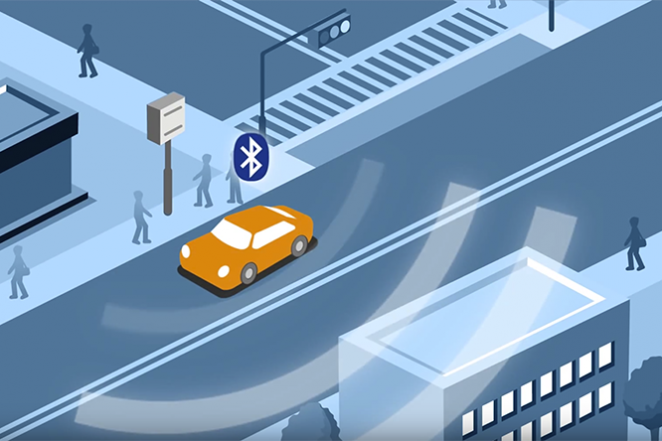The city of Aarhus, Denmark has deployed 10 dynamic digital signs that are driven by motorist’s driving behavior and real-time data from their Bluetooth equipment, such as headsets and mobile phones. The signs provide instructions that include driving times and the fastest routes, which saves time and helps traffic to flow smoothly.
The traffic data on the new information signs is based upon real-time inputs from 125 BlipTrack Sensors that are placed on selected roads in Aarhus. These sensors detect motorists driving with a Bluetooth device, such as in hands-free systems and mobile phones. When a vehicle with an activated Bluetooth device passes the sensors, its anonymous ID, also called a MAC address, is recorded, encrypted and time-stamped. The data is then sent to a server where it is filtered and analysed.
By combining the data collected by all sensors, an accurate picture about each road user, such as their travel times, dwell times and movement patterns are provided. The information of the monitoring system are used to inform and warn city traffic engineers about queues and delays, identify problem areas, evaluate and calibrate traffic signals, provide information on the capacity of existing roads, and detect changes in traffic patterns.
Austraffic is the Australian partner of Blip Systems. Contact us if you'd like to learn more about BlipTrack Bluetooth sensors and real-time data collection.


